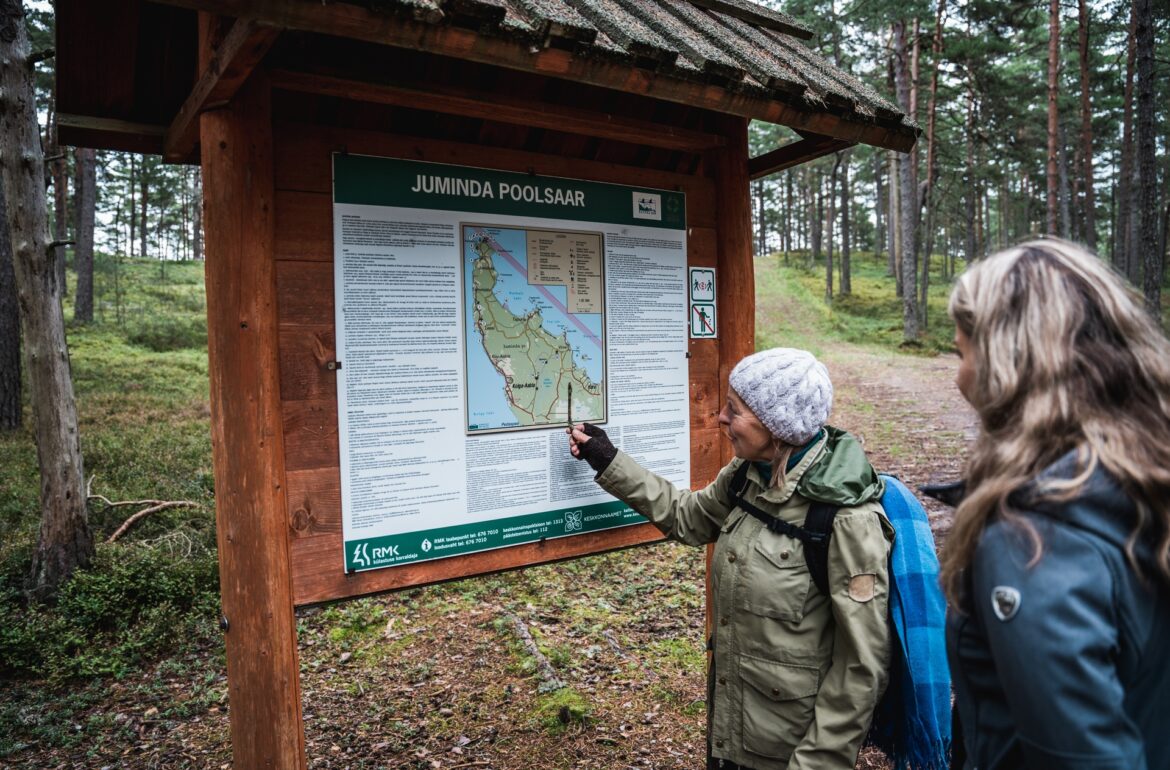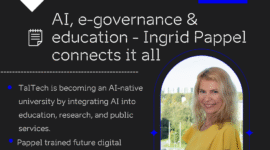When teaching about complex phenomena, such as concepts related to the natural environment, good quality questioning could lead to a more profound conceptual change. However, asking questions that help students construct new knowledge is a challenge for many educators, according to a group of researchers at Tallinn University (TU).
To help promote better questioning, the group of researchers from Tallinn University analyzed the kind of questions educators used in “trails” in a digital outdoor learning tool “, Discovery Trail”, designed to support environmental education.
“Not only in Estonia but also worldwide, there seems to be a gap in teacher training: namely, how to ask a proper question and what types of questions exist,” Grete Arro, an educational psychologist at Tallinn University, said.
For this survey, the research group distinguished between cognitively lower-order and higher-order open-ended questions and then categorized the higher-order questions by their degree of complexity. “We identified three types of questions: those that are less difficult, those that are more challenging, and those that are complex and enhance the learner’s ability to grasp something new,” Arro said.
Along with an associate professor, Elina Malleus-Kotšegarov , and other colleagues from Tallinn University, Arro was interested in what questions Estonian teachers ask their students.
Results showed that only 20 per cent of all the questions used in educational trails were complex. Moreover, 60 per cent of such trails did not have any cognitively complex open-ended questions, as concluded in the article published in Environmental Education Research.
The researchers concluded that the tool did not support conceptual change in thinking, as mainly simple recall questions were asked.
The researchers said that educators could better consider the type of thinking required for each question or assignment when preparing lessons, i.e., construct questions that promote conceptual change. This is crucial for supporting the new understanding of complex topics.
A good question is slow
“Educators should always ask themselves, ‘What type of thought process do I want my question to elicit in the mind of the student?'” Arro said. She said that if the learner can answer the question swiftly, quickly, and without much contemplation, it is a poor question.
“The question should be one on which you spend time thinking, pondering over, debating, having conversations, or moving in a particular direction. The sort that requires you to approach the topic carefully and, ideally, understand its complexity,” she said.
Her team selected 288 research “trails” from the digital environment “Discovery Trail” and merged all the questions into a single large sample. Arro compared the search for the selection’s more challenging questions to the work of a good tailor: “We began with a suit and ended with a tie. We started on our quest with 3168 questions, and after eliminating all but the most challenging and open-ended ones, we were left with 194.”
There can be different types of difficult questions, she went on. They may require the student to analyze, synthesize, evaluate something or recall prior knowledge. Also, questions where the learner has to interpret contradictory data, extend prior knowledge into a new context or apply prior knowledge, are classified as more challenging. “It was actually the biggest surprise that the proportion of these dried up so quickly,” Arro said.
Elina Malleus-Kotšegarov, co-author of the study and an associate professor at Tallinn University, said that the low proportion of difficult questions aligns with the results of previous studies in other countries. “Essentially, the same trend can be seen in the classroom context: indeed, fewer challenging questions are posed.”
Students were asked the most multiple-choice questions in the survey sample. According to the associate professor, the working group’s concentration was not on them this time. “By their very nature, multiple-choice questions that facilitate deep learning are difficult to create. Therefore, we focused on open-ended questions in this survey. We also had a distinctive premise for classifying them,” she explained.
The majority of open-ended questions posed by teachers required recall of prior knowledge. Malleus-Kotšegarov said such questions also have a place among the more complex brain teasers, but this category should not be limited. The more complex open-ended questions were rarely posed, she continued. “The one that elicits prior knowledge in terms of concept development was the least frequently posed,” she said.
A quick answer shoots the question in the foot
According to the researchers, there may be many reasons why educators prefer simpler questions. Arro said that many educators in Estonia and worldwide do not always consider the nature of learning. “Does learning occur when someone gives the correct answers without thinking?” According to the researcher, learning does not commence until the learner is required to conduct in-depth reflection and investigation. “We really need to ask more probing questions,” she said.
Malleus-Kotšegarov said teachers might also lack awareness; it is easier to think of simpler questions. She explains, “When preparing a difficult question, you must be very knowledgeable about the subject and know your students and their current knowledge fairly well to ask the right question at the right time.”
Secondly, she said, teachers design learning “paths” or lesson plans in general at a slightly slower tempo. “In fact, a meaningful track can consist of three good questions. However, we noticed many additional questions and more of a rush in general,” she said. She said some of the study’s analyzed questions could have prompted in-depth contemplation. “This is where the ability to ask questions comes back into play,” she said. “However, once the thinking starts, we have already given up the point and are rushing on.”
Based on the study’s findings, educational psychologists advocate for a greater emphasis on effective questioning in teacher preparation programs in Estonia and worldwide. We do not necessarily prioritize excellent question writing. “Not only in terms of the subject matter but also in terms of the structure of the question,” Arro said.
Malleus-Kotšegarov suggests that teachers should also consider ways to spark conversation between teachers and their pupils or between pupils. “Dialogue is one of the most powerful teaching tools in the classroom,” she said, “but not all dialogues are equally effective in terms of learning.” The instructor has to consider the type of cognitive process that such a debate promotes in the students.
Conversely, when moving overnight to more complex questions, teachers must anticipate that pupils will not immediately catch on. “Do not be disheartened by the fact that they will likely need to adjust to it as well,” she said. Instead of giving up, teachers should persevere and explain to students why answering these kinds of questions is essential.
Malleus-Kotšegarov concluded that it would be an excellent idea for students to explore the trail in groups, as this would generate thought-provoking dialogue among them. However, Arro adds that such Socratic (question-and-answer) dialogue requires practice: “Sometimes we pose questions that are too prescriptive: the thinking process does not begin if the teacher’s expression indicates the correct response.”
Grete Arro, Elina Malleus-Kotšegarov and colleagues published their study, “Asking meaningful questions in digital outdoor learning tool — a way to support conceptual change,” in the Journal of Environmental Education Research.
Written by: Airika Harrik. This article was originally published in the Estonian Public Broadcasting news portal.
 Back
Back



